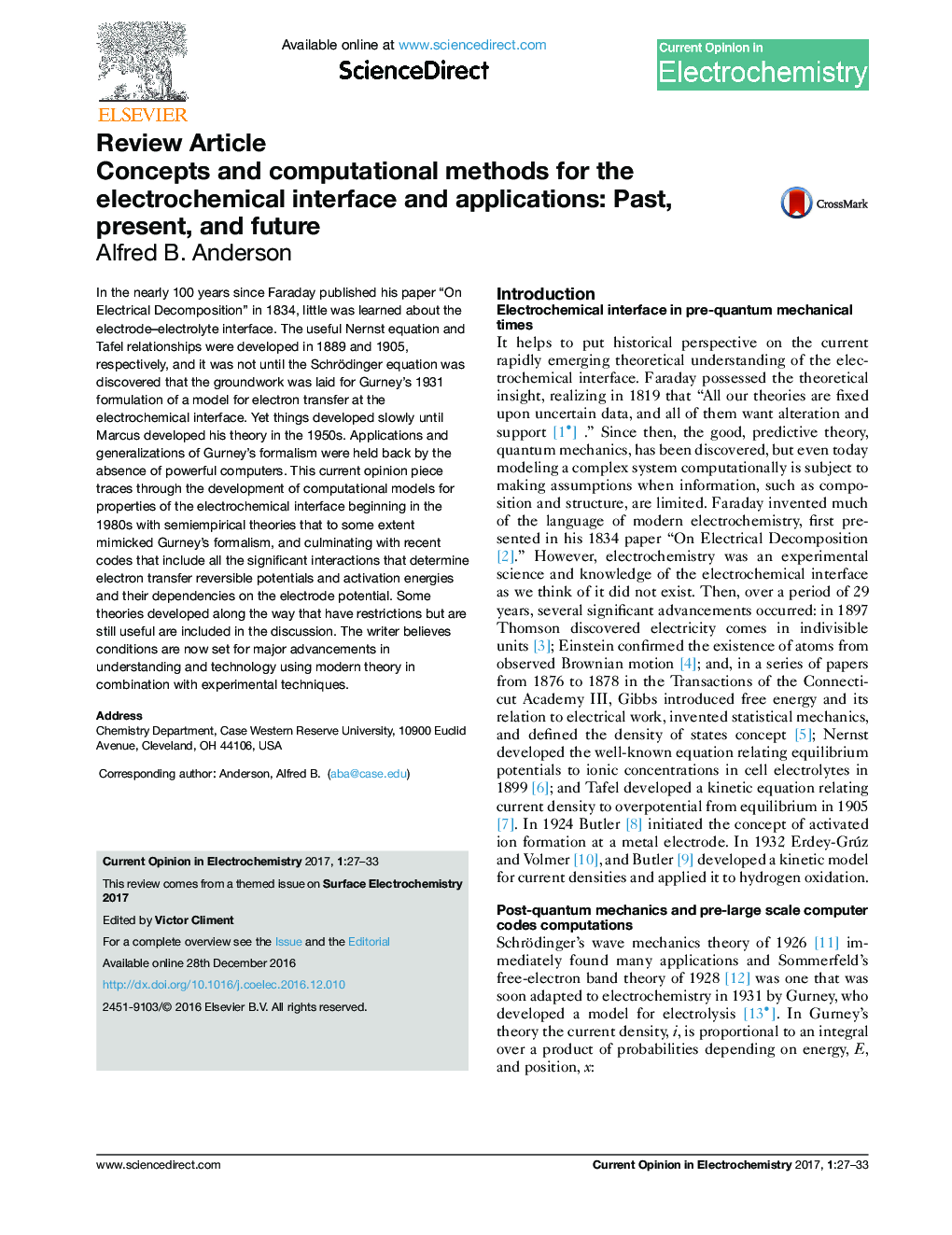| Article ID | Journal | Published Year | Pages | File Type |
|---|---|---|---|---|
| 8917763 | Current Opinion in Electrochemistry | 2017 | 7 Pages |
Abstract
In the nearly 100 years since Faraday published his paper “On Electrical Decomposition” in 1834, little was learned about the electrode-electrolyte interface. The useful Nernst equation and Tafel relationships were developed in 1889 and 1905, respectively, and it was not until the Schrödinger equation was discovered that the groundwork was laid for Gurney's 1931 formulation of a model for electron transfer at the electrochemical interface. Yet things developed slowly until Marcus developed his theory in the 1950s. Applications and generalizations of Gurney's formalism were held back by the absence of powerful computers. This current opinion piece traces through the development of computational models for properties of the electrochemical interface beginning in the 1980s with semiempirical theories that to some extent mimicked Gurney's formalism, and culminating with recent codes that include all the significant interactions that determine electron transfer reversible potentials and activation energies and their dependencies on the electrode potential. Some theories developed along the way that have restrictions but are still useful are included in the discussion. The writer believes conditions are now set for major advancements in understanding and technology using modern theory in combination with experimental techniques.
Related Topics
Physical Sciences and Engineering
Chemistry
Electrochemistry
Authors
Alfred B. Anderson,
